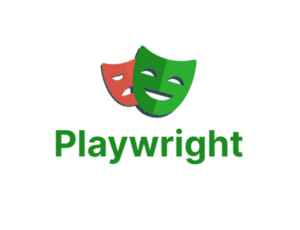Regulatory compliance is a big deal in the lending business. It’s not something you can afford to ignore or take lightly. Following the rules and regulations set by the authorities is crucial for lending institutions to stay out of trouble and keep their operations running smoothly. Operating in a non-compliant manner can face hefty fines, legal concerns, and damage to your reputation that might be hard to recover from.
In recent years, financial institutions have faced billions of dollars in fines due to non-compliance with lending regulations. Yep, you heard it right—billions! That’s a staggering amount that could seriously dent your bottom line and put your business in jeopardy. It’s not just about playing by the rules; it’s about protecting your business and setting yourself up for long-term success.
Lenders battle compliance complexity
Lenders face significant challenges in the compliance landscape due to the complex and evolving regulatory environment. Firstly, the sheer volume and complexity of regulations can be overwhelming for lenders to navigate. They must keep up with many rules and requirements, often varying across jurisdictions, increasing compliance efforts’ complexity. Additionally, regulatory agencies frequently introduce new regulations or update existing ones, making it challenging for lenders to stay current and ensure compliance. Lenders must also invest in robust compliance systems and technologies to monitor and track compliance activities effectively. Moreover, the risk of non-compliance penalties, fines, and reputational damage adds to lenders’ pressure.
The potential costs of non-compliance are staggering and extend far beyond simple fines. Organizations lose an average of $5.87 Million in revenue due to a single non-compliance event.
Here are some recent and shocking data points to consider:
- In 2020 alone, banks were fined $14.2 Billion for non-compliance, with the United States accounting for 78% of issued fines.
- JP Morgan was fined $125 million in 2021 for failing to implement compliance controls.
Compliance efforts often require dedicated teams, resources, and ongoing training to ensure adherence to regulations. Overall, lenders must continually adapt to the changing compliance landscape, stay ahead of regulatory changes, and invest in compliance infrastructure to mitigate risks and maintain regulatory compliance.
Lenders non-compliance fallout
Unveiling the aftermath of non-compliance, lenders face the daunting fallout that reverberates through their operations and reputation.
- Financial penalties and fines imposed by regulatory authorities for non-compliance
- Potential suspension or revocation of the firm’s license to operate.
- Strained relationships with loan providers due to loss of trust and hesitancy to provide further funding.
- Limited access to financing and credit facilities hinders the firm’s growth plans.
- Adverse publicity and damage to the firm’s reputation
- Erosion of customer trust and confidence, leading to a loss of clients and business
- Rebuilding a tarnished reputation requires significant resources and time.
Mitigating Regulatory Compliance Risks: Essential Steps for Operational Resilience
In the dynamic landscape of complex regulations, gaining a profound comprehension of compliance risks is paramount. By stepping back and assessing vulnerabilities within your loan cycle you can effectively mitigate these risks and navigate the complexities of the regulatory environment.
Let us dive in and conquer regulatory compliance together!
- Robust Compliance Framework: Establish a comprehensive compliance framework that includes policies, procedures, and controls to ensure adherence to regulatory requirements.
- Regular Risk Assessments: Conduct regular risk assessments to identify and mitigate compliance risks specific to your organization. Stay updated on industry trends and regulatory changes that may impact your operations.
- Technology Adoption: Invest in compliance-focused technology solutions such as automated monitoring systems, data analytics tools, and risk management software to enhance efficiency and accuracy in compliance processes.
- Compliance Monitoring and Reporting: Implement robust monitoring mechanisms to identify and address compliance issues proactively. Maintain accurate records and generate timely reports to demonstrate compliance with regulatory authorities.
- Regular Compliance Reviews: Conduct periodic reviews and assessments of your compliance program to identify gaps or areas that need enhancement and implement necessary adjustments.
How can Insight Consultants help?
Building an effective compliance strategy is crucial and can be a big lift for firms. At Insight, we are flexible in supporting your compliance responsibilities.
We offer:
- Automate and customize adverse action notices, ensuring adherence to regulatory requirements while streamlining the process and improving consumer communication efficiency.
- Generate personalized notices tailored to individual consumers, reducing errors and enhancing communication effectiveness.
- Support multiple versions of customizable notices, accommodating diverse variations and specific requirements, providing the necessary flexibility in the notification process.
- Automated email, text, and on-screen notifications to ensure the generation of disclosures within the specified time frame, promoting timely delivery and compliance.
- Additional automated email, text, and on-screen notifications to ensure that applications are decisioned following your institution’s service levels.
- We have established systems and procedures to effectively handle data collection, testing, and compliance requirements associated with regulations such as HMDA, CIP, MLA, HPML, HCML, ATR, and QM.
- Text /email alert system to notify users of any changes in loan status, including loan declines, withdrawals, or other updates.
With the ever-changing regulatory landscape, lending firms are presented with a prime opportunity to use technology to proactively reshape their compliance function. By strategically modifying their operating model and processes, they can elevate the quality of oversight and drive operational efficiency. Embracing this transformative journey equips lending firms with a competitive edge, allowing them to deliver exceptional service, optimize costs, and effectively manage operational risks.
If you want to learn more about our compliance management services, contact us here.
Get Insights to stay ahead in the Lending Industry.
Insights delivered monthly!







